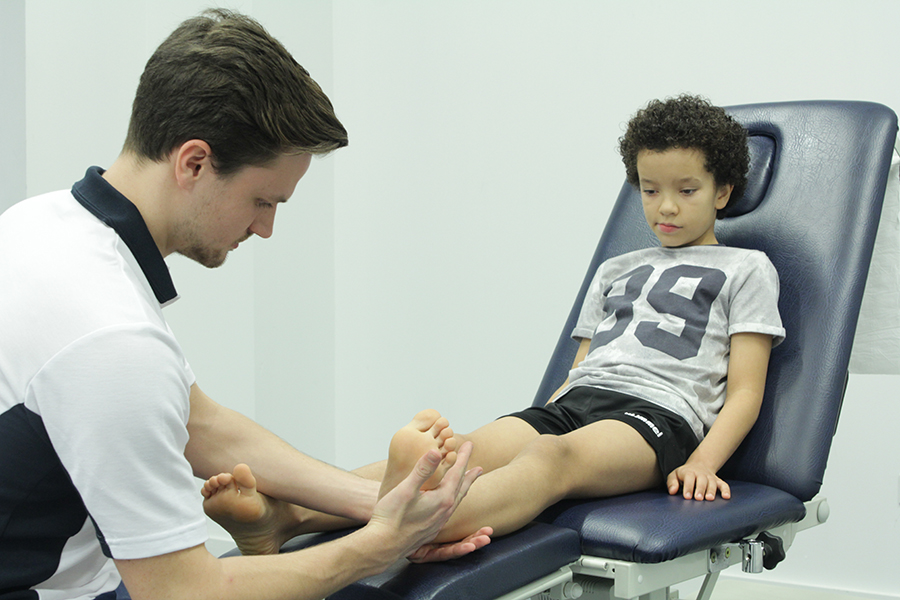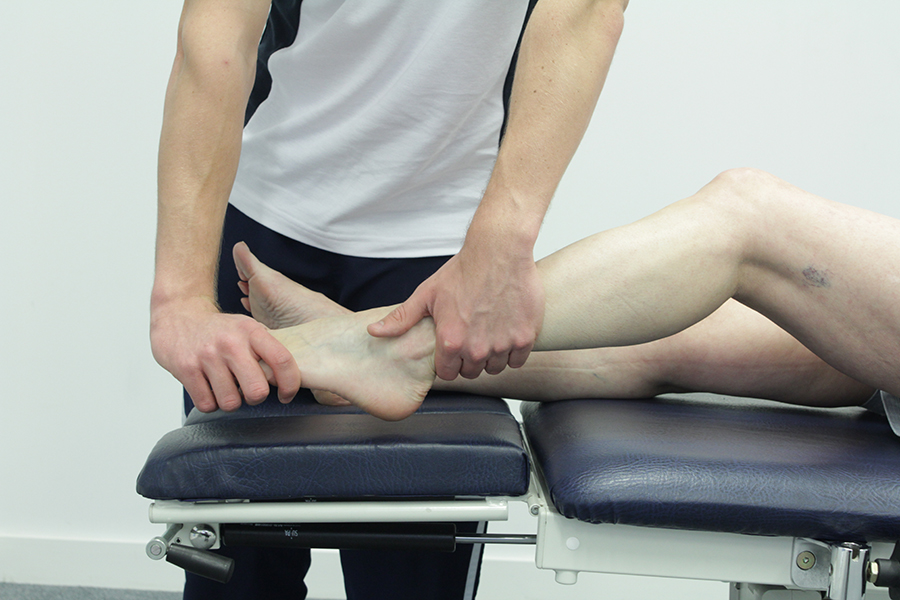Sever's disease
Sever's disease is defined as inflammation of the growth plate at the back
of the heel.
Sever's disease, also known as calcaneal apophysitis, is a painful bone
condition that affects the growth plate at the back of the heel, as a
result the condition seen in children and teenagers between the ages of 10
and 15 years; particularly those who participate in a lot of sport.
The painful symptoms associated with Sever's disease are not permanent and
will usually settle after a few months. In the mean-time however, podiatry
can help relieve the painful symptoms of Sever's disease, allowing your
child to continue with their activities pain free.
What is Sever's disease?
Sever's disease is a common condition of the heel that is found in children and teenagers. A person who has Sever's disease will experience pain at the back of the heel near the Achilles tendon, as this is where the growth plate is positioned. The growth plate can become irritated through overuse and this then leads to inflammation which then produces painful symptoms at the back of the heel.

What causes Sever's disease?
Sever's disease is due to inflammation of the growth plate at the back of
the heel and typically occurs during a child's growth spurt.
The heel bone is not fully mature in children and teenagers, instead of
being one complete bone; the heel bone is in two parts. In between the two
parts of the developing heel bone is cartilage, and this is how the bone
increases in size. Sever's disease occurs when the area in between the two
pieces of developing bone becomes inflamed, which happens through a
combination of rapid growth (a growth spurt) and overuse. Sever's disease
is therefore caused by damage or irritation to the area of growth known as
the growth plate in the heel bone.
During a child's development the heel bone can sometimes grow at a faster
rate than the calf muscles at the back of the leg and this makes these
muscles very tight. Tight calf muscles pull on the Achilles tendon, which
attaches to the growth plate at the heel. Overuse of the tight calf muscles
and Achilles tendon, pull on the growth plate at the heel and cause it to
become irritated ' leading to inflammation and pain.
Sever's disease can affect any child; however, the following increase the
chances of a child developing Sever's disease:
- Over-pronation
- Leg length difference
- Being over-weight
- Feet that have either too high or too flat an arch
- Wearing footwear that is not supportive or that irritates the heel
What are the signs and symptoms of Sever's disease?
The signs and symptoms of Sever's disease include:
- A heel that is swollen and warm to touch (inflamed)
- Tight calf muscles
- Pain along the edge of one or both heels. The heel pain may be:
- Brought on with activity
- Worse on tiptoes
- Worse in the morning
- Relived by rest
- Cause a limp
How is Sever's disease diagnosed?
One of our podiatrists here at Chiropody.co.uk will make a diagnosis of Sever's disease based on a thorough history, the signs and symptoms and an examination of the foot.

Benefits of Podiatry for Sever's disease
After podiatric assessment and treatment at Chiropody.co.uk the following benefits may be achieved for a child that has Sever's disease:
- Reduction in pain
- Improved foot and lower limb function
- Reduced injury risk
- Increased muscle strength
- Decreased muscle tightness
- Improved gait
Benefits are achieved a number of ways, for example, by reducing
inflammation. Inflammation is the cause of pain, if inflammation is
reduced, any pain experienced as a result will be reduced also. Your
child's podiatrist can not only advise on the most appropriate
anti-inflammatory to treat the initial painful symptoms of Sever's, but as
well as this they will address the cause. This is done with orthoses, which
work by off-loading the painful heel and taking away some of the tension
from the calf muscle and the Achilles tendon. Orthoses are worn inside
footwear and are designed according to prescription needs. By offloading
the heel, calf muscle, and Achilles tendon, the inflamed structures are
given time to heel, at the same time any poor mechanics that have
contributed to the development of Sever's disease in your child will be
improved.
To aid your child's recovery and to further improve symptoms your child's
podiatrist will prescribe a set of exercises, the aim of which is to reduce
any tightness in the muscles.
What would podiatry for Sever's disease involve?
Podiatry for Sever's disease would involve obtaining a thorough history, which would consist of:
- A medical history
- Your personal account of the problem
Your podiatrist will then examine both of the heels and have a look at your
foot posture (the position of your foot). If the podiatrist feels that your
foot posture is contributing to the painful symptoms, then you may be
referred for a biomechanical assessment which will assess the mechanics of
the lower limb. The aim of a biomechanical assessment is to prescribe an
orthotic that will improve the function of your foot and lower limb.
Upon a diagnosis of Sever's disease the following treatments may be
recommended by your podiatrist:
- Rest
- Anti-inflammatory advice
- Orthotics (shoe inserts)
- Stretching Programmes
- Footwear review
- Advice and education
- Heel raises
- Training review
Summary
Sever's disease is a painful condition that affects the growth plate in the
heel bone. Sever's disease is found in children and teenagers, typically
between the ages of 10 and 15 who are going through a period of rapid
growth.
Sever's disease can affect any child, however those who participate in lots
of sport who are going through a growth spurt are more at risk of
developing the condition than others.
The painful symptoms associated with Sever's disease will usually settle
down after a few months, in the mean-time podiatry can help relieve these
symptoms.
To arrange an assessment with one our podiatrists please email office@chiropody.co.uk or call 0330 088 4222.
Save 5% by booking an appointment online.



We work with:

Individuals

Organisations

Health professionals
Get in Touch!
0330 088 4222
If you would like to speak to one of our specialists then please complete this form.
We are open 7 days a week








